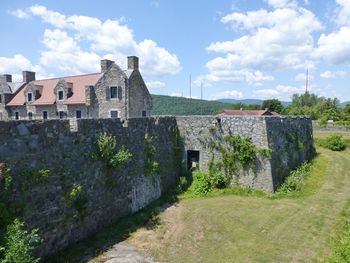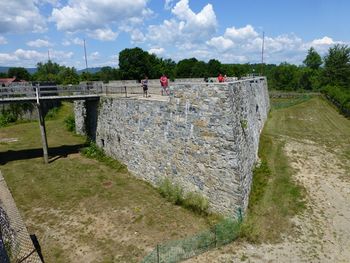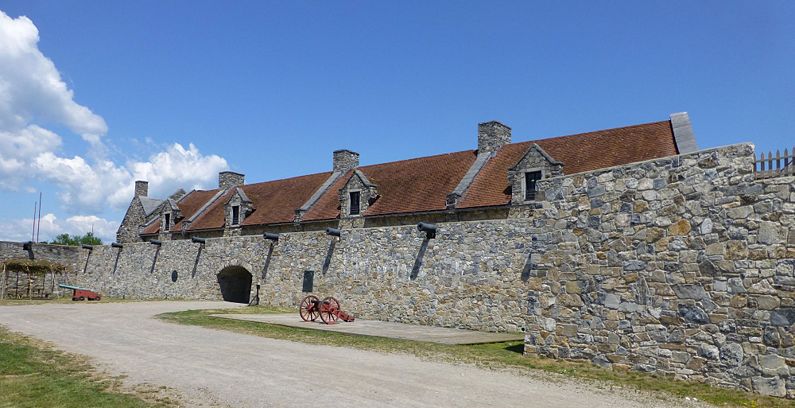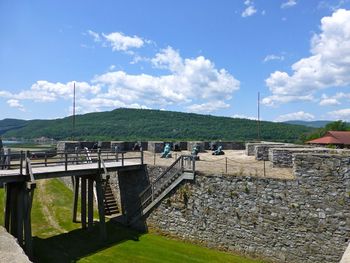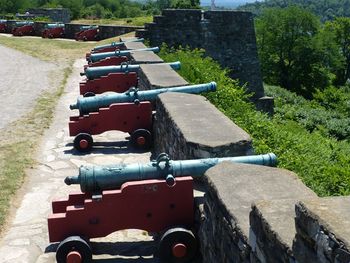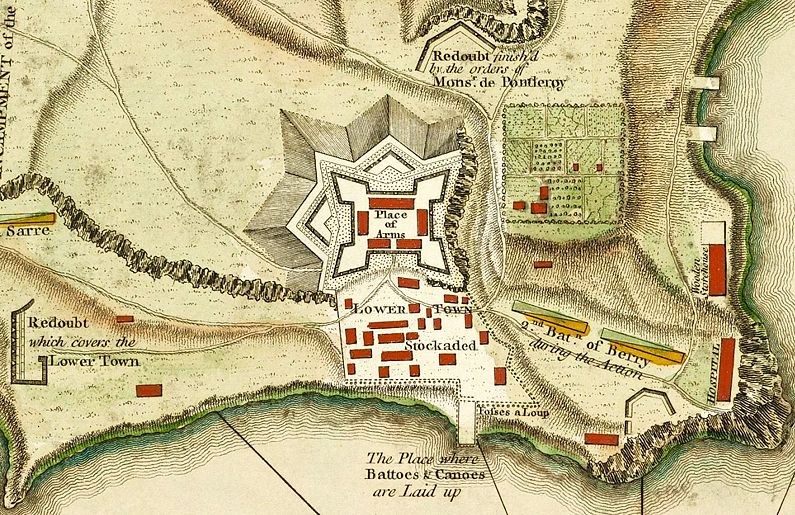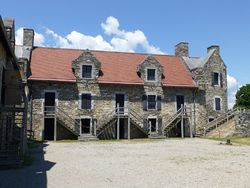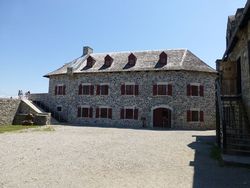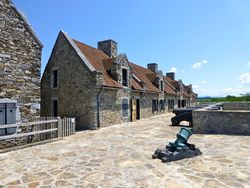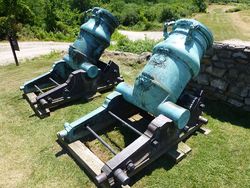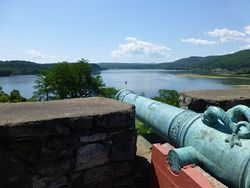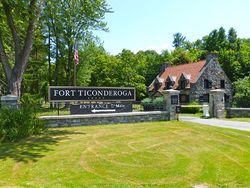Fort Ticonderoga
| More information at Warlike, Wikidata, Wikipedia
Fort Ticonderoga (1750-1796) - First established in 1750 by the French as Fort Vaudreuil, later rebuilt by them as Fort Carillon. Later named Fort Ticonderoga after the Iroquois word for the junction of two waterways. Captured by the British in 1759 and the Americans in 1775 and recaptured by the British in 1777. Abandoned by the British in late 1777 and by the Americans in 1796. French & Indian War (1754-1763)The original Fort Vaudreuil built in 1750 was a small stockade. In 1755 the French Governor of Canada sent Michel Chartier de Lotbiniere to designed and construct Fort Carillon at the south end of Lake Champlain to prevent British access to the lake. Lotbiniere began construction of a small star-shaped, Vauban-style fort in October 1755 using troops stationed at nearby Fort St. Frederic. The fort grew to include:
The walls were seven feet high and fourteen feet thick. The wooden exterior walls were dressed with stone from a local quarry. The structures inside the fort were constructed of stone and most were higher than the seven-foot walls. The fort was surrounded by a glacis and a dry moat five feet deep and fifteen feet wide. The fort was essentially complete by 1758 and armed with cannons from Montreal and Fort St. Frederic. In Jul 1759 British General Jeffery Amherst captured Fort Carillon with an 11,000 man army and renamed it Fort Ticonderoga. General Amherst rebuilt and improved the fort. After the end of the French & Indian War the fort served as a storage depot for British arms.
Revolutionary War (1775-1783)Early in the Revolutionary War, patriot forces under Ethan Allen and Benedict Arnold captured Fort Ticonderoga from a small British garrison. The captured British arms were later sent to support the siege of Boston and contributed to driving the British from the city. British General John Burgoyne recaptured Fort Ticonderoga in July 1777 but abandoned it in October 1777, the departing garrison burned the fort. The fort was again repaired and garrisoned by the British in 1781. The 1783 Treaty of Paris ended the Revolutionary War and the British withdrew, leaving the fort abandoned without an American caretaker force. In 1796, Columbia and Union Colleges were allowed to lease the land to private persons to generate income. In 1820, a private person, William Ferris Pell, bought the entire property and began a multi-generation restoration of the fort and the grounds.
Current StatusOwned and operated by the Fort Ticonderoga Association, a not-for-profit educational institution. The fort is under a continuous restoration process. Includes an exceptional museum with artifacts from the site. Period cannons and mounts at most gun positions. Attractions include the King's Garden and the remains of the Pell home. When you exit the fort parking lot you pass through the French lines that include many historic markers and fortifications. Must See fortification.
Sources:
Links:
Visited: 11 Jul 2012
|
